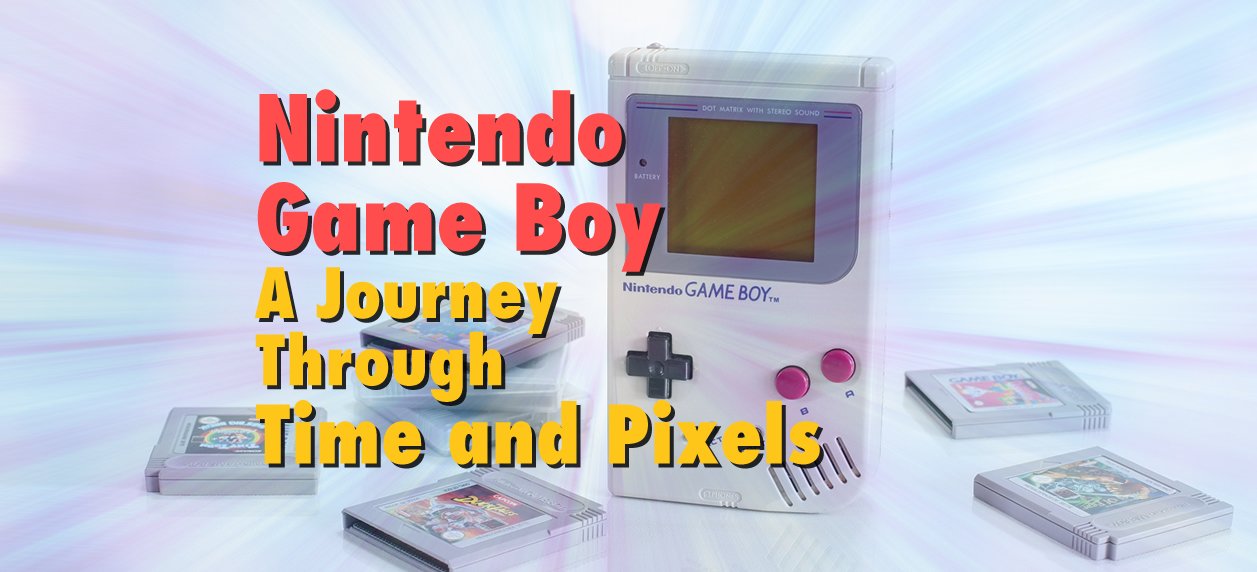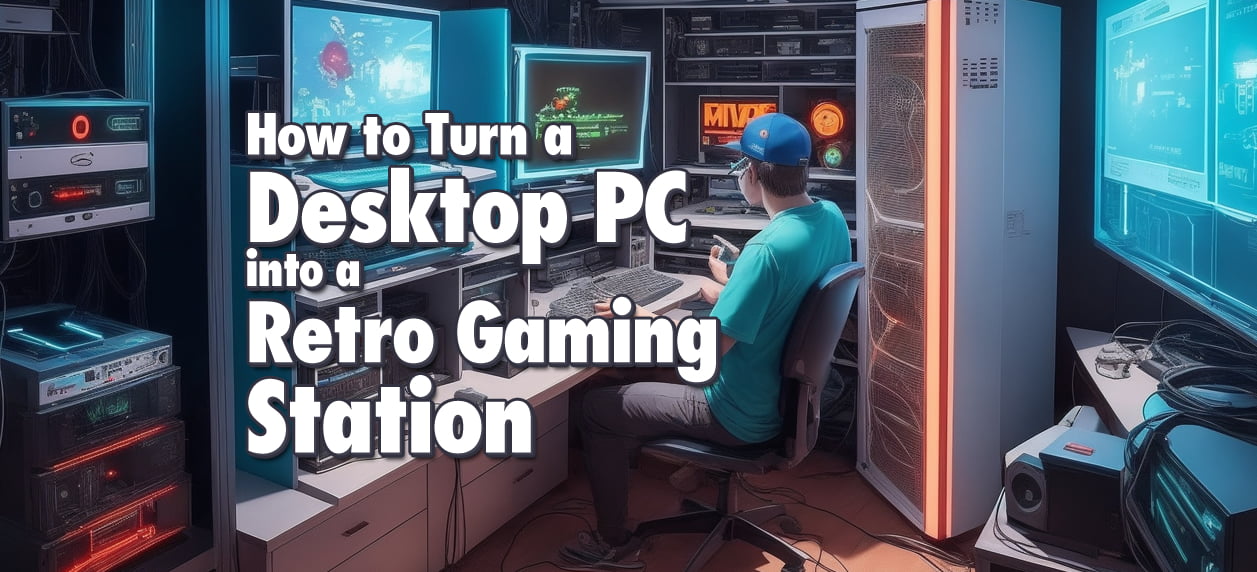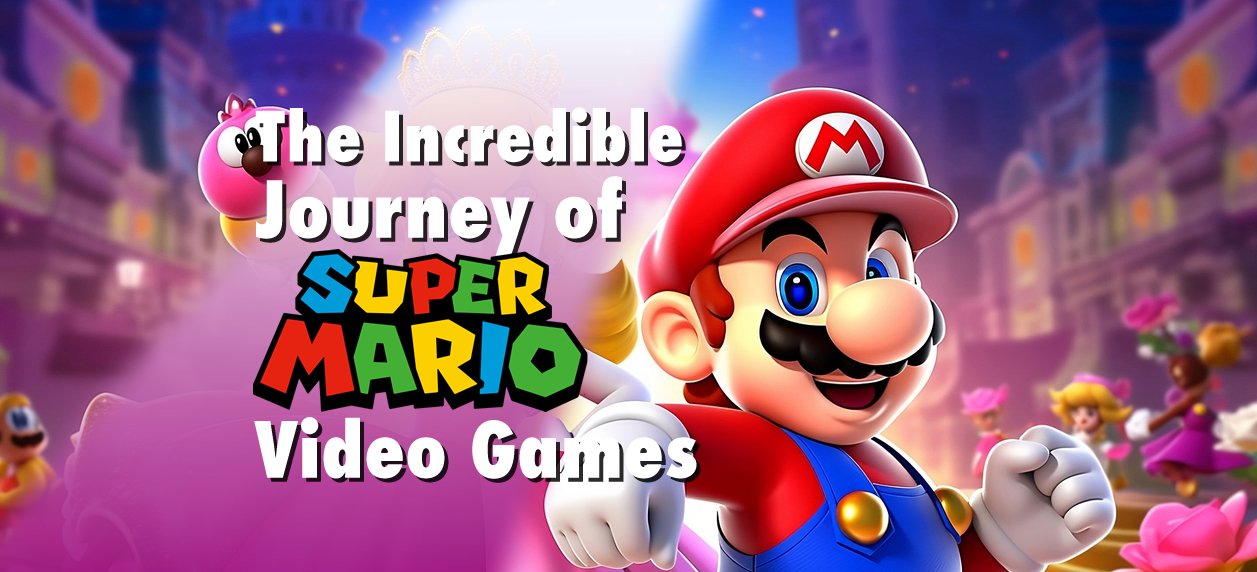The Nintendo Game Boy is a legendary piece of gaming history that holds a special place in the hearts of gamers worldwide. This iconic handheld console not only revolutionized the way we play games but also helped shape the gaming industry as we know it today.
Table of Contents
In this post, we'll embark on a nostalgic journey through the history and evolution of the Game Boy, explore some interesting facts, delve into its impressive worldwide sales figures, highlight notable games, and examine case studies of famous Game Boy vloggers.
A Glimpse into the Past
The Nintendo Game Boy made its debut in 1989, and its creator, Gunpei Yokoi, envisioned a portable gaming device that would provide a compelling gaming experience on the go. Unlike its contemporaries, the Game Boy was known for its simplicity, durability, and affordability. Its monochrome screen and 8-bit graphics may seem primitive by today's standards, but at the time, it was nothing short of revolutionary.
The Birth of the Game Boy Concept: The concept of the Game Boy was born out of Gunpei Yokoi's philosophy of “Lateral Thinking with Withered Technology.” This approach emphasized repurposing existing technology in creative ways to create innovative products. Yokoi, who had previously worked on the immensely successful Game & Watch handhelds, believed that portable gaming could be taken to the next level.
Development and Design:
The development of the Game Boy began in the mid-1980s. Nintendo's Research and Development 1 (R&D1) team, led by Yokoi, worked tirelessly to create a handheld gaming device that was both affordable and had long battery life. The result was a sleek, rectangular design with a simple monochrome screen.
One of the most significant design decisions was the choice of a monochrome screen over color. Yokoi and his team intentionally went with this low-power, greenish display to conserve battery life and ensure the device could be used in various lighting conditions. This choice became an iconic feature of the Game Boy.
Release and Instant Success:
On April 21, 1989, the Game Boy was released in Japan. It was an instant hit, selling out quickly and sparking a wave of demand. The North American release followed in July of the same year, and it met with similar success.
Part of what made the Game Boy so appealing was its price point, which was considerably lower than other gaming consoles at the time. Additionally, the bundle with “Tetris” as a pack-in game was a brilliant move, as “Tetris” became synonymous with the Game Boy and contributed significantly to its popularity.
Game Boy's Longevity:
The Game Boy's success wasn't short-lived; it continued to thrive for nearly a decade. Nintendo's commitment to backward compatibility allowed players to enjoy their existing Game Boy games on newer iterations of the console, ensuring a seamless transition for loyal fans.
Competition and Influence:
While the Game Boy faced competition from other handhelds like the Sega Game Gear and Atari Lynx, its affordability, battery life, and extensive game library helped it maintain a dominant position in the market. The Game Boy's influence can also be seen in subsequent handheld consoles, such as the Nintendo DS and the Nintendo Switch, which built upon its design and success.
Legacy and Nostalgia:
Today, the Nintendo Game Boy is celebrated for its role in shaping the gaming industry and for the nostalgia it continues to evoke. Gamers who grew up with the Game Boy have fond memories of playing titles like “Pokémon,” “Super Mario Land,” and “The Legend of Zelda” on the small, greenish screen. Collectors hunt for rare editions and limited-run Game Boy systems, and the platform remains popular among retro gaming enthusiasts.
The Nintendo Game Boy's history is a testament to the power of innovative design, creative thinking, and the enduring appeal of portable gaming. It not only revolutionized the way we play games but also left an indelible mark on the hearts of millions of gamers worldwide, a legacy that continues to thrive to this day.
Evolution of the Game Boy
Over the years, Nintendo released several iterations of the Game Boy, each building upon the success of its predecessor:
- Game Boy Pocket (1996): A slimmer and lighter version of the original Game Boy, featuring improved battery life.
- Game Boy Color (1998): Introduced a color screen and backward compatibility with Game Boy games, enhancing the gaming experience.
- Game Boy Advance (2001): Marked a significant leap in processing power and graphics, featuring a 32-bit processor and vibrant, backlit screen.
- Game Boy Advance SP (2003): Introduced a clamshell design and a front-lit screen, making it more portable and visually appealing.
- Game Boy Micro (2005): The smallest and most portable Game Boy, featuring interchangeable faceplates.
Interesting Facts
- The Game Boy's famous greenish monochrome screen was intentionally chosen to enhance battery life and visibility in various lighting conditions.
- The Game Boy's name was inspired by the idea that players could take their games anywhere, making it a “boyfriend” for gamers.
- The original Game Boy came bundled with the game “Tetris,” which became one of the console's most iconic titles.
Worldwide Sales and Impact
The Game Boy's success can be measured by its astounding sales figures. It sold over 118 million units worldwide, making it one of the best-selling consoles in history. Its affordability, extensive game library, and portability contributed to its widespread popularity and longevity in the gaming industry.
Sales by Country: The Game Boy's sales figures varied across different countries and regions, but it enjoyed significant success globally. Here's a breakdown of some key regions:
- Japan: Being Nintendo's home country, Japan was one of the initial markets for the Game Boy. It saw strong sales and became an instant hit, largely due to the strong game lineup and Nintendo's marketing efforts.
- North America: The Game Boy's launch in North America in July 1989 was met with immense enthusiasm. Sales skyrocketed, and it quickly became a must-have item, with “Tetris” as a bundled game contributing to its appeal.
- Europe: The Game Boy's popularity in Europe grew steadily, and it became a sensation in the early '90s. Titles like “Pokémon” and “Super Mario Land” played a crucial role in boosting sales across the continent.
- Rest of the World: The Game Boy had a presence in many other regions, including South America and Asia. Its affordability and portability made it accessible to a wide range of gamers.
Marketing Strategies: Nintendo's marketing strategies played a pivotal role in the Game Boy's global success:
- Bundled Games: Including “Tetris” with the Game Boy was a masterstroke. It not only showcased the system's capabilities but also provided immediate entertainment value.
- Iconic Advertising: Nintendo ran memorable advertising campaigns that featured the tagline “Now you're playing with power… portable power!” These ads effectively conveyed the idea of taking console-quality gaming on the go.
- Licensing Agreements: Nintendo collaborated with various companies to create themed Game Boy units and games. For example, the “Pokémon” franchise, with its unique versions for different regions, drove sales significantly.
Social Impacts: The Nintendo Game Boy had profound social impacts:
- Portable Multiplayer: The Game Boy's link cable allowed players to connect and play games together, fostering social interactions among friends and family.
- Education and Learning: Educational games for the Game Boy, such as “Brain Age” and “Mario Is Missing!” contributed to its reputation as a versatile platform with educational benefits.
- Nostalgia and Collecting: The Game Boy continues to evoke nostalgia among those who grew up with it. Many collectors and enthusiasts actively seek vintage Game Boy systems and games, contributing to a thriving retro gaming market.
Groups of Interests: The Game Boy appealed to a diverse range of groups:
- Children and Families: The Game Boy was family-friendly, and its affordability made it accessible to parents looking for a gaming device for their children.
- Gamers on the Go: The portability of the Game Boy made it a favorite among commuters and travelers, offering entertainment during long trips.
- Adults: The simplicity of many Game Boy games made them appealing to adults as well. Titles like “Tetris” had a universal appeal.
- Collectors and Enthusiasts: A dedicated community of collectors and enthusiasts formed around the Game Boy, with many seeking rare editions and limited-run consoles.
The Nintendo Game Boy's worldwide sales success was a result of a well-executed marketing strategy, its ability to cater to a diverse audience, and its enduring appeal as a portable gaming device. Its social impact continues to be felt today, as it remains a beloved part of gaming history, cherished by both those who experienced it during its heyday and a new generation of gamers discovering its charm.
Notable Game Boy Games
Highlighting ten iconic titles that left a significant mark on the platform's history and contributed to its enduring popularity:
- Tetris (1989): “Tetris” is synonymous with the Game Boy. This addictive puzzle game challenged players to arrange falling blocks to complete lines. Its simple yet captivating gameplay made it an instant classic and a perfect fit for the portable console.
- The Legend of Zelda: Link's Awakening (1993): This action-adventure game brought the beloved “Legend of Zelda” series to the Game Boy. It featured an engaging storyline, challenging dungeons, and introduced players to the dreamlike Koholint Island.
- Pokémon Red and Blue (1998): These games kickstarted the global Pokémon craze. Players embarked on a journey to become Pokémon trainers, capture creatures, and battle their way to the Pokémon League.
- Super Mario Land (1989): Mario made his portable debut in “Super Mario Land.” This platformer introduced new enemies, power-ups, and levels, providing a fresh Mario experience for Game Boy players. More about the Super Mario Videogames saga.
- Metroid II: Return of Samus (1991): Samus Aran returned in this action-packed Metroid game. Players explored the hostile planet SR388 to eradicate the Metroid menace, paving the way for future entries in the series.
- Donkey Kong (1994): This iteration of the classic arcade game brought back Donkey Kong and introduced players to Mario's agile rival, Stanley the Bugman. It showcased the Game Boy's capabilities with vibrant graphics and varied gameplay.
- Castlevania: The Adventure (1989): This side-scrolling action game brought the vampire-hunting action of the “Castlevania” series to the Game Boy. It challenged players to defeat Dracula's minions and ultimately face the iconic vampire himself.
- Kirby's Dream Land (1992): Kirby, the lovable pink puffball, made his debut on the Game Boy. Known for his unique ability to inhale enemies, Kirby embarked on a whimsical adventure to save Dream Land from the villainous King Dedede.
- Wario Land: Super Mario Land 3 (1994): Wario, Mario's greedy counterpart, took center stage in this platformer. Players guided Wario on a quest for treasure, showcasing his unique abilities and humorous antics.
- Final Fantasy Adventure (1991): This action RPG, originally part of the “Mana” series, offered a deep and engaging narrative with exploration, combat, and magic. It set the stage for the beloved “Secret of Mana” series.
These ten games are just a glimpse into the rich and diverse library of titles available for the Game Boy. Each game not only showcased the platform's capabilities but also provided memorable experiences that continue to be cherished by gamers and collectors alike, contributing to the enduring legacy of the Game Boy as a beloved gaming icon.
Case Studies: Famous Game Boy Vloggers
Here some famous Game Boy Vloggers and YouTubers who have made significant contributions to the Game Boy community with their content:
- The Game Boy Geek (Jason): Jason is renowned for his in-depth Game Boy reviews and analyses. He provides comprehensive insights into various aspects of Game Boy gaming, including reviews of games, hardware, and accessories.
- Gaming Historian (Norman Caruso): Norman Caruso, known as the Gaming Historian, has explored the Game Boy's history in-depth through his well-researched documentaries. His videos shed light on the Game Boy's impact on the gaming industry.
- Metal Jesus Rocks (Jason Lindsey): Jason Lindsey, aka Metal Jesus, covers a wide range of gaming topics, including the Game Boy. He's featured the console and its games in several videos, attracting a broad audience with his entertaining and informative content.
- John Riggs: A veteran in the retro gaming community, John Riggs creates engaging content related to Game Boy, from hardware reviews to game recommendations. He's known for his practical tips and repair guides.
- Retro Game Mechanics Explained (Stefan): Stefan's channel dives deep into the mechanics and programming behind retro games, including those on the Game Boy. His technical analyses provide a unique perspective on the platform's games.
- Game Boy Guru (Garrett): Garrett's channel is dedicated to the Game Boy and its games. He offers reviews, tutorials, and discussions on various aspects of Game Boy gaming.
- Game Sack (Joe and Dave): Joe and Dave's channel covers a wide range of gaming topics, including retrospectives on classic games and consoles like the Game Boy. Their informative and entertaining content appeals to both casual gamers and enthusiasts.
- The Retro Future (Joel): Joel's channel focuses on retro gaming and collecting, and he often features the Game Boy and its games. His vlogs, reviews, and collection showcases resonate with fellow collectors.
- Scott The Woz (Scott Wozniak): While Scott primarily covers a wide range of gaming topics, he occasionally delves into Game Boy-related content. His humorous and well-researched videos often provide unique insights into gaming history.
These Game Boy vloggers and YouTubers have contributed to the preservation and celebration of the Game Boy's legacy. Their passion, expertise, and engaging content have helped keep the Game Boy community vibrant and connected, appealing to both nostalgic fans and new generations of gamers interested in exploring the world of classic handheld gaming.
An Indelible Mark On The Gaming World
The Nintendo Game Boy has left an indelible mark on the gaming world. Its simple yet addictive games, innovative design, and enduring legacy continue to resonate with gamers and collectors alike.
As we look back on its history and evolution, we're reminded of the power of innovation and the timeless appeal of great games, making the Game Boy a true icon in the world of gaming.




